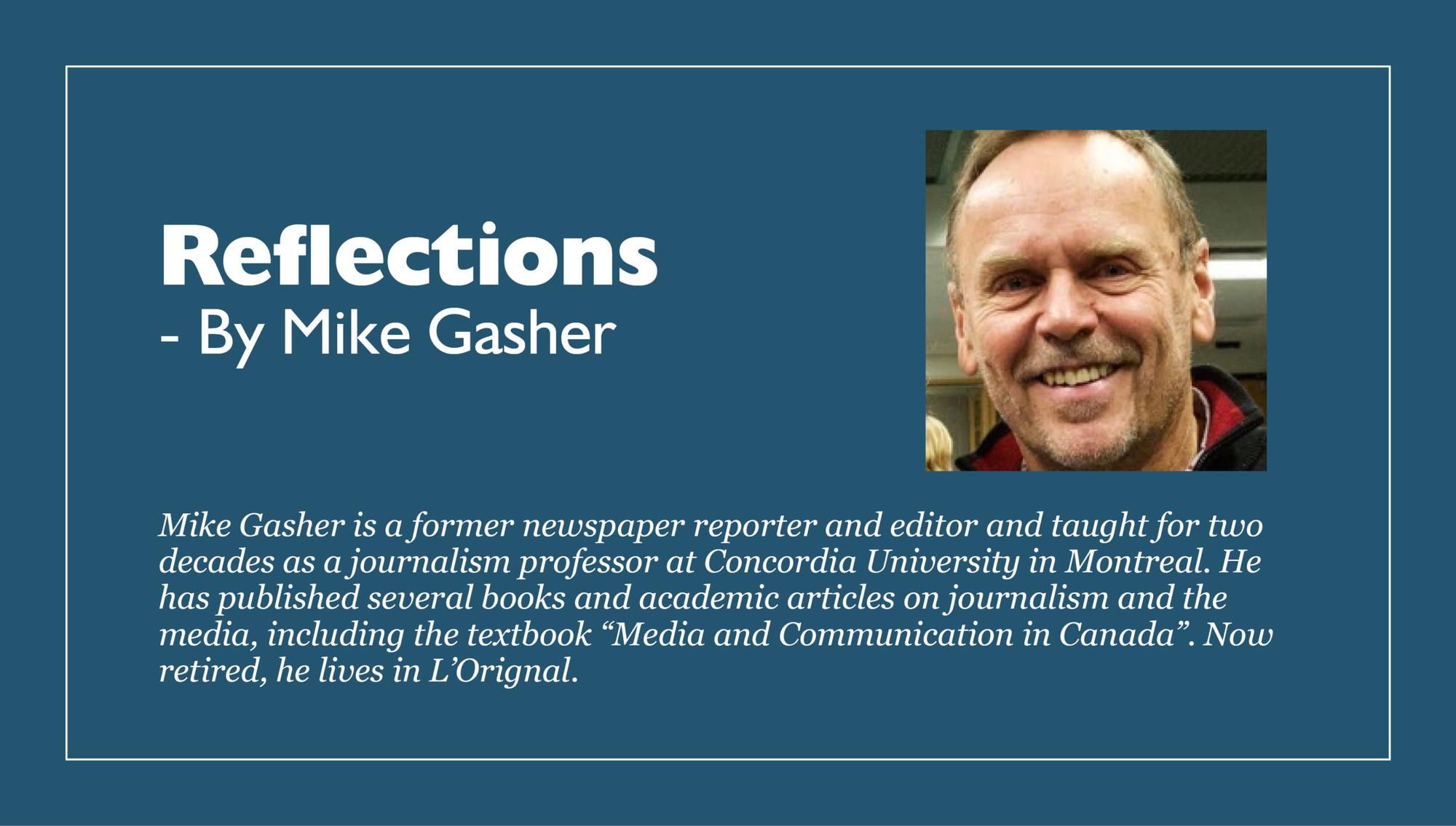As with most Canadians, I like to think of myself as literate. In fact, I like to think I am more literate than most.
I’ve spent all of my working life reading and writing. Now retired, I spend at least two hours a day reading, mostly in English, but also in French. Newspaper articles, magazines, books, and yes, Facebook posts.
But on a driving vacation across Canada with my wife Dianne a couple of summers ago, I learned that I’m pretty much unlettered in so many other ways, unable to read with any confidence many of the most common features of the Canadian landscape. And I’m willing to bet this is not a unique condition.
Reading traffic signs and roadmaps is one thing, but can you read the rocks, the trees, the flowers, the crops in the fields, the different kinds of birds flying by, the clusters of stars at night?
In northern Ontario, we drove for hour after hour through the Canadian Shield and looked past the spray-painted graffiti and Inukshuks to remark on the distinct forms and colours of the rock faces along the highway. It made me wish I’d paid more attention in my physical geography class, one of the science classes humanities students were forced to take, with a professor who knew why we were there and knew we were never going to be rock stars. My ignorance of igneous struck me again and again, pretty much everywhere we went: in the dry hills of the Okanagan Valley, in the Fraser Canyon, on some of the stony beaches of B.C.’s Gulf Islands.
Across the prairies, we identified readily enough the brilliant yellow canola and the purple haze of the flax fields, but that field over there? I’m assuming it’s wheat, but it could be barley. And who knew there were so many kinds of cattle? As a teen, I worked on a southern Ontario farm for exactly three days, two of them “picking stones” and one of them stacking hay in the steamy loft of a barn. That was enough for me; it didn’t pay much, nor apparently did I pay much attention.
In the East Block of Saskatchewan’s Grasslands National Park, we were stunned by the sheer blackness of the night sky. I could pick out the Big Dipper and the North Star and the Milky Way – duh! –, but could only guess at the countless others. A week later, in Cypress Hills Provincial Park, we stayed up half the night with the resident astronomer to distinguish planets from stars, and satellites from the orbiting International Space Station. I am still coming to terms with looking so far into the past, when we peered through the telescope to see the Whirlpool Galaxy and its neighbouring dwarf galaxy. What we saw as separate galaxies some 30 million light years away had, very likely, already merged as one. Now that’s a history class!
On a long hike on a hot afternoon in Alberta’s Elk Island Provincial Park, we identified the mosquitos immediately, but we spent hours trekking through stands of trees we couldn’t name, stepping past beautiful mushrooms we did not know, and saw ferns and shrubs and wild grasses that we could only categorize as random plants showing off how many shades of green nature can come up with. I won’t even mention the various types of animal droppings on the trail – now there’s an idea for a guidebook!
Making our way along the magnificent Icefields Parkway between Lake Louise and Jasper, we marveled at the seemingly unnatural colour of the glacial lakes. I understand why the sky is blue, but why are these lakes turquoise?
I know, I know, there are countless guidebooks to the flora, the fauna, the rocks and the stars – I now own a shelf full of them. And, yes, I’ve heard of Google and Wikipedia.
But there are, if you think about it, too many kinds of literacy for any one of us to master, the vocabularies of architecture, contemporary art, classical music, computing, wine, personal finance.
By the campfire each morning on our trip, I spent some time reading histories of the regions we were visiting, novels by local authors, remnants of the community newspapers I had used to get the fire started. Over those two and a half summer months, I felt my knowledge of Canada’s national literature was enhanced considerably.
As for our natural literature, I clearly have much more work to do.


